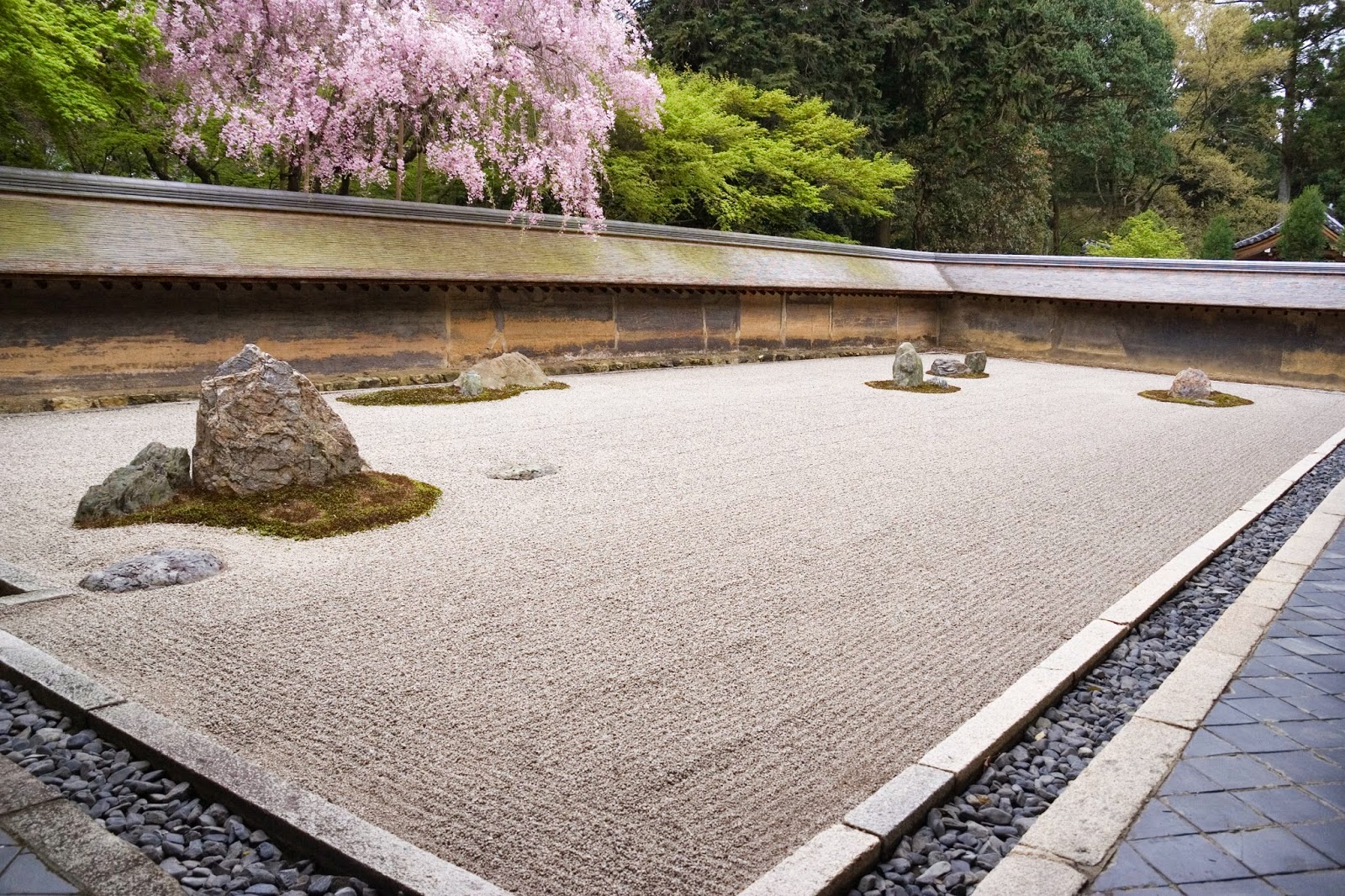Gardens of raked sand (or gravel) and stone
are referred to as karesansui (literally, “dry landscape”) gardens. This style
was developed in Japan in the later Kamakura period (1185–1333). Many Chinese
landscape paintings of the Southern Sung dynasty were imported to Japan in the
14th and 15th centuries by Zen Buddhist priests, and they were emulated by
Japanese artists like Sesshu (1420-1506). An important Japanese aesthetic
principle underlying both landscape paintings and dry landscape gardens is
yohaku-no-bi, literally “the beauty of blank space.”
Dry landscape" garden, often called a
zen garden, creates a miniature stylized landscape through carefully composed
arrangements of rocks, water features, moss, pruned trees and bushes, and uses
gravel or sand that is raked to represent ripples in water.
Once you visit such gardens, you might feel
clam and peace. In the market, you can get mini zen garden kits. You can try to
those kits to fulfil your zen spirit.






Peaceful, yes, but I see no clams.
ReplyDelete